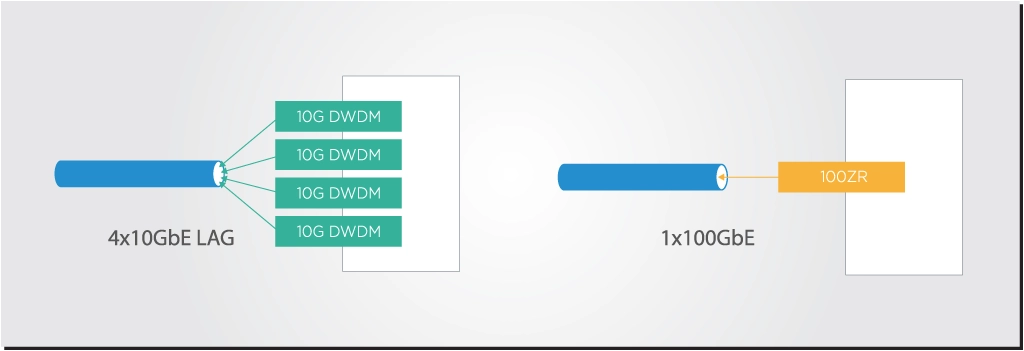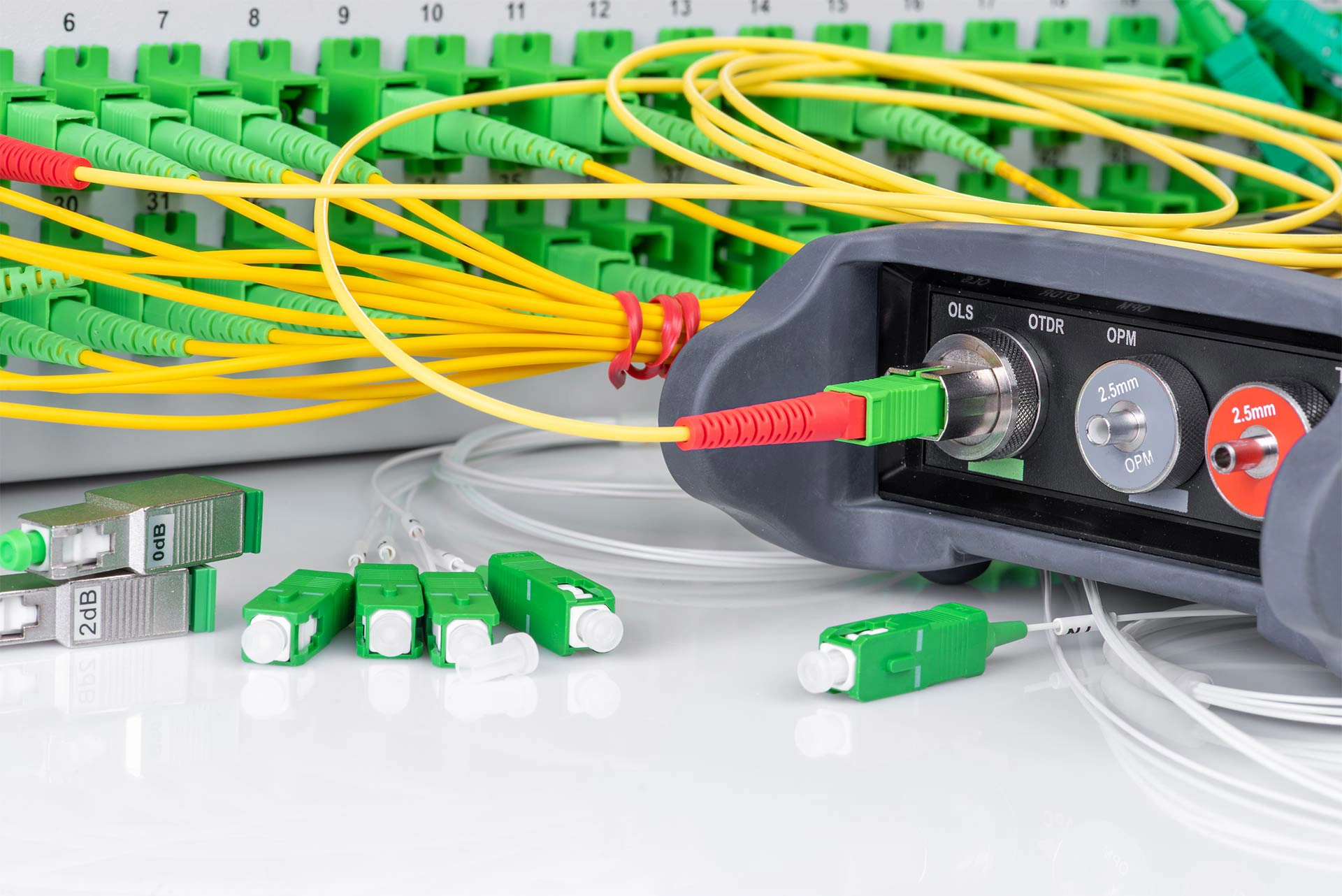What Goes Into Power Per Bit
In the information and communication technology (ICT) sector, the exponential increase in data traffic makes it difficult to keep emissions down and contribute to the energy transition. A 2020 study by Huawei estimates that the power consumption of the data center sector will increase threefold in the next ten years. Meanwhile, wireless access networks are expected to increase their power consumption even faster, more than quadrupling between 2020 and 2030.

These issues affect both the environment and the bottom lines of communications companies, which must commit increasingly larger percentages of their operating expenditure to cooling solutions.
As we explained in our previous articles, photonics and transceiver integration will play a key role in addressing these issues and making the ICT sector greener. EFFECT Photonics also believes that the transition of optical access networks to coherent 100G technology can help reduce power consumption.
This insight might sound counterintuitive at first since a coherent transceiver will normally consume more than twice the power of a direct detect one due to the use of a digital signal processor (DSP). However, by replacing the aggregation of multiple direct detect links with a single coherent link and skipping the upgrades to 56Gbps and going directly for 100Gbps, optical networks can save energy consumption, materials, and operational expenditures such as truck rolls.
The Impact of Streamlining Link Aggregation
The advanced stages of 5G deployment will require operators to cost-effectively scale fiber capacity in their fronthaul networks using more 10G DWDM SFP+ solutions and 25G SFP28 transceivers. This upgrade will pressure the aggregation segments of mobile backhaul and midhaul, which typically rely on link aggregation of multiple 10G DWDM links into a higher bandwidth group (e.g., 4x10G).
On the side of cable optical networks, the long-awaited migration to 10G Passive Optical Networks (10G PON) is happening and will also require the aggregation of multiple 10G links in optical line terminals (OLTs) and Converged Cable Access Platforms (CCAPs).

This type of link aggregation involves splitting larger traffic streams and can be intricate to integrate within an access ring. Furthermore, it carries an environmental impact.
A single 100G coherent pluggable consumes a maximum of six watts of power, which is significantly more than the two watts of power of a 10G SFP+ pluggable. However, aggregating four 10G links would require a total of eight SFP+ pluggables (two on each end) for a total maximum power consumption of 16 watts. Substituting this link aggregation for a single 100G coherent link would replace the eight SFP+ transceivers with just two coherent transceivers with a total power consumption of 12 watts. And on top of that reduced total power consumption, a single 100G coherent link more than doubles the capacity of aggregating those four 10G links.
Adopting a single 100G uplink also diminishes the need for such link aggregation, simplifying network configuration and operations. To gain further insight into the potential market and reach of this link aggregation upgrade, it is recommended to consult the recent Cignal AI report on 100ZR technologies.
The Environmental Advantage of Leaping to 100G
While conventional wisdom may suggest a step-by-step progression from 28G midhaul and backhaul network links to 56G and then to 100G, it’s important to remember that each round of network upgrade carries an environmental impact.
Let’s look at an example. As per the European 5G observatory, a country like The Netherlands has deployed 12,858 5G base stations. There are several thousands of mid- and backhaul links connecting groups of these base stations to the 5G core networks. Every time these networks require an upgrade to accommodate increasing capacity, tens of thousands of pluggable transceivers must be replaced nationwide. This upgrade entails a substantial capital investment as well as resources and materials.
A direct leap from 28G mid- and backhaul links directly to coherent 100G allows network operators to have their networks already future-proofed for the next ten years. From an environmental perspective, it saves the economic and environmental impact of buying, manufacturing, and installing tens of thousands of 56G plugs across mobile network deployments. It’s a strategic choice that avoids the redundancy and excess resource utilization associated with two consecutive upgrades, allowing for a more streamlined and sustainable deployment.
Streamlining Operations with 100G ZR
Beyond the environmental considerations and capital expenditure, the operational issues and expenses of new upgrades cannot be overlooked. Each successive generation of upgrades necessitates many truck rolls and other operational expenditures, which can be both costly and resource-intensive.
Each truck roll involves a number of costs:
- Staff time (labor cost)
- Staff safety (especially in poor weather conditions
- Staff opportunity cost (what complicated work could have been done instead of driving?)
- Fuel consumption (gasoline/petrol)
- Truck wear and tear
By directly upgrading from 25G to 100G, telecom operators can bypass an entire cycle of logistical and operational complexities, resulting in substantial savings in both time and resources.
This streamlined approach not only accelerates the transition toward higher speeds but also frees up resources that can be redirected toward other critical aspects of network optimization and sustainability initiatives.
Conclusion
In the midst of the energy transition, the ICT sector must also contribute toward a more sustainable and environmentally responsible future. While it might initially seem counterintuitive, upgrading to 100G coherent pluggables can help streamline optical access network architectures, reducing the number of pluggables required and their associated power consumption. Furthermore, upgrading these access network mid- and backhaul links directly to 100G leads to future-proofed networks that will not require financially and environmentally costly upgrades for the next decade.
As the ecosystem for QSFP28 100ZR solutions expands, production will scale up, making these solutions more widely accessible and affordable. This, in turn, will unlock new use cases within access networks.
